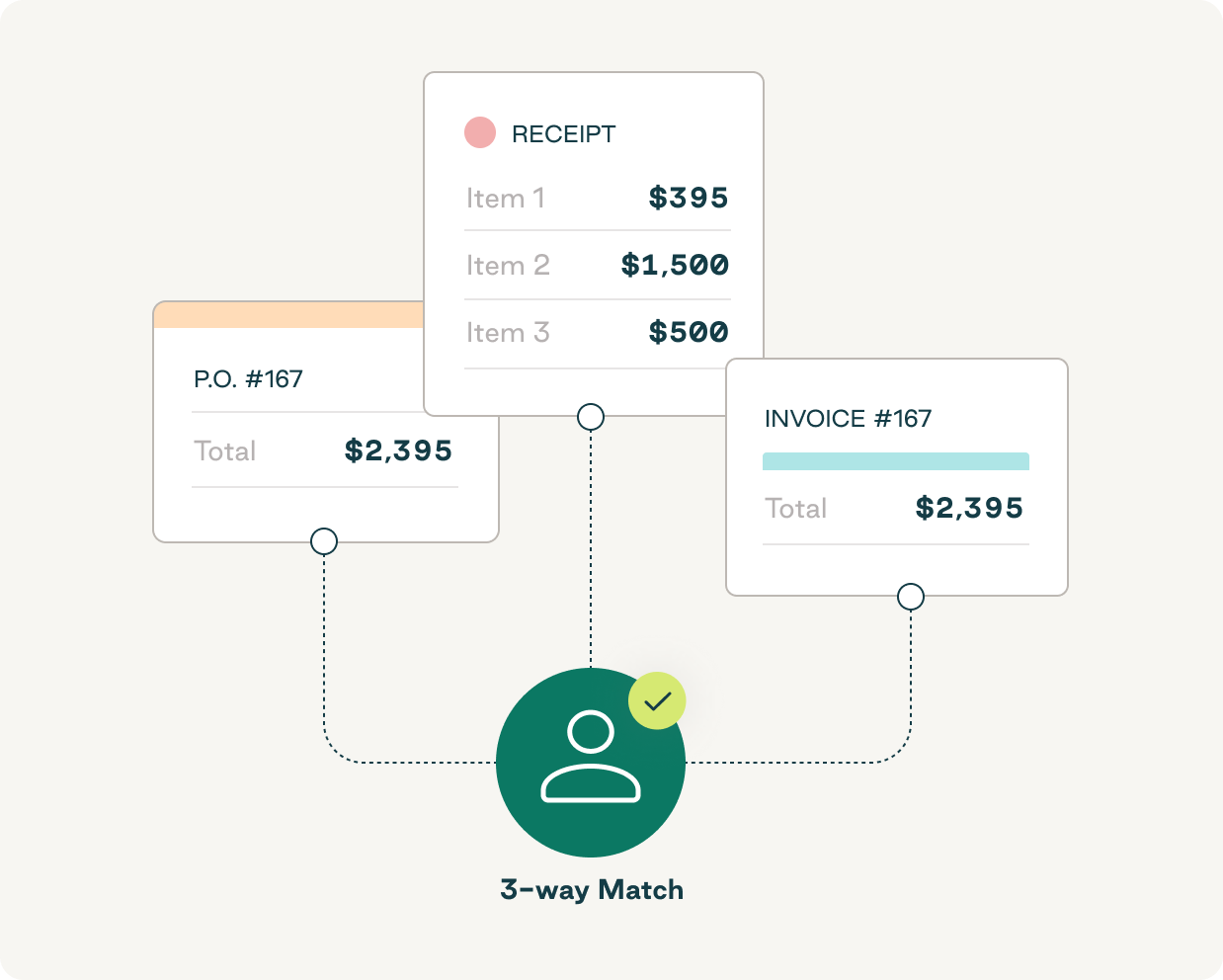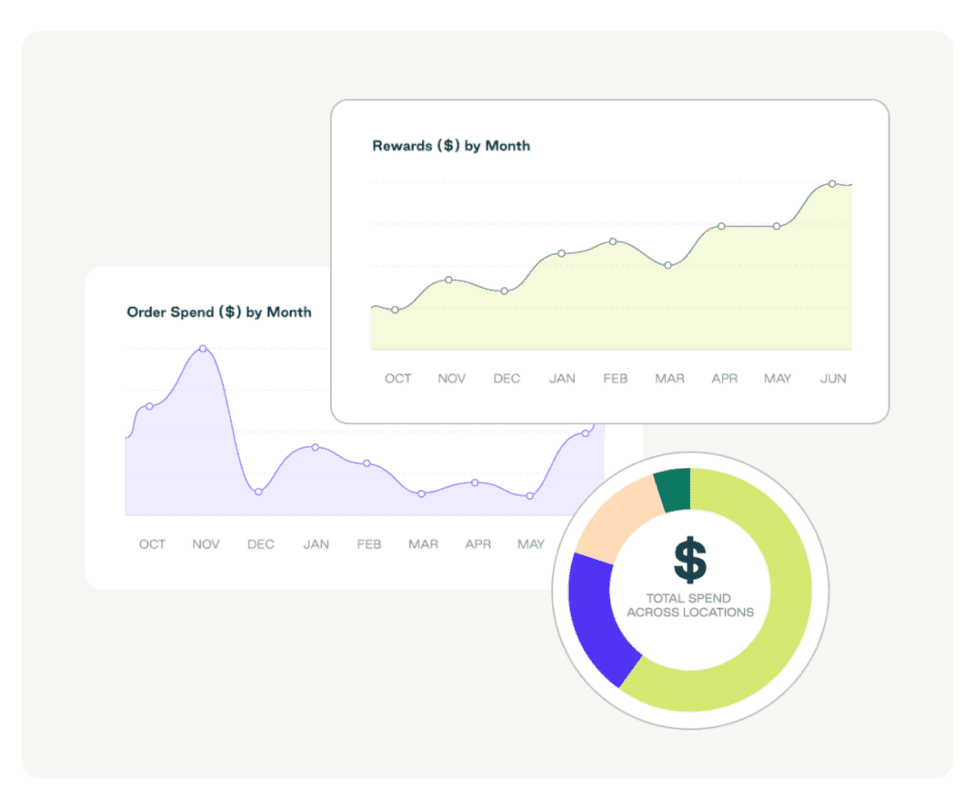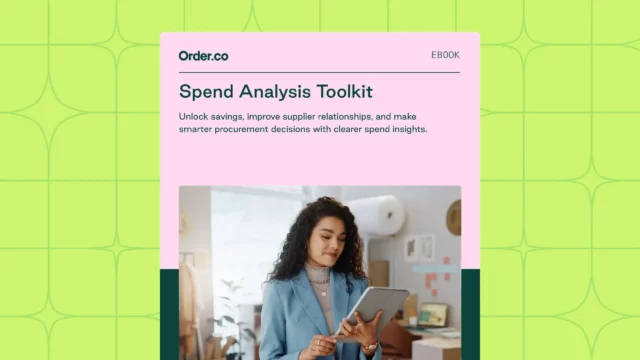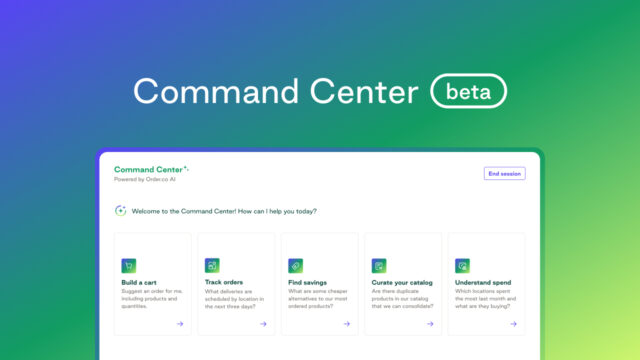How Procurement Transformation Provides a Competitive Advantage

How Procurement Transformation Provides a Competitive Advantage
The role of procurement has evolved from a back-office purchasing function to a strategic driver of value and efficiency. This shift defines modern procurement transformation.
Since traditional procurement initiatives can no longer fully support the dynamic needs of today's teams, optimizing your source-to-pay workflows can create a competitive advantage. The payoff comes from greater spending efficiency, deeper cost savings, and increased operational productivity.
This guide breaks down how procurement transformation bridges the gap between spend and strategy, offers actionable tips for transforming your procurement function, and explores what to expect from the future of procurement.
Download the free guide: Spend Analysis Toolkit
What is procurement transformation, and why does it matter?
Procurement transformation is the restructuring of a company’s procurement process, systems, and staff to elevate it from an administrative function to a strategic, cost-focused one.
Given the instability of the current state of supply chain management, you've likely already felt impacts like increased costs and delayed deliveries. Almost half of global supply chain executives expect more shocks in the coming 24 months, yet traditional supply chain and procurement practices offer little in the way of prevention or risk control.
By shifting from transactional to tactical procurement management methods, you can better align sourcing and purchasing activities with your organization’s broader objectives. Procurement transformation helps you extract more value from these activities while reducing operational costs and mitigating potential supply chain risks.
Procurement transformation ROI: Top benefits for mid-market companies and large enterprises
Over 50% of procurement teams have adopted automation technologies to improve speed, efficiency, and responsiveness. This adoption supports the primary aim of procurement transformation: reducing costs through a more productive and strategic spend management approach.
Key benefits of procurement transformation include:
- Improved cost savings: Modern procurement software solutions support significant bottom-line savings by centralizing purchasing, consolidating vendors for better prices and discounts, and eliminating process bottlenecks.
- Greater procurement process efficiency: Automated workflows and centralized data management shorten procure-to-pay cycle times and identify inefficiencies you can prioritize based on impact and value.
- Advanced compliance and risk management: More accurate spend data, coupled with smooth supplier onboarding processes, reduces exposure to common supply chain risks while ensuring adherence to company and contract policies.
- Smarter strategic initiatives: Transformation gives you a clearer picture of spending patterns, helping you curtail maverick spend and leverage historical data for smarter purchasing decisions.
While upfront costs are typically unavoidable, effective procurement transformation offers significant returns on your investment once fully implemented.
For example, global coworking company WeWork faced slow manual AP processes and limited spend visibility as it grew. To address these challenges, it transformed its procurement department to reduce the resources required for accounts payable.
After investing in Order.co’s dynamic procure-to-pay software, WeWork automated thousands of invoices, consolidated 110 vendors, and centralized its purchasing. This resulted in significant time and cost savings, with a faster requisition process and automatic three-way matching for invoice payments.

How to build your procurement transformation vision and strategy
A well-defined procurement transformation roadmap provides the foundation for success. Rather than immediately investing in technology and processes that seem beneficial, begin by preparing your organization and creating an implementation plan based on your desired outcomes.
Set clear, SMART transformation goals
SMART (Specific, Measurable, Achievable, Relevant, Time-bound) goals help you break your vision into actionable objectives to create a strategy that’s more likely to succeed over the long term.
Use this template to develop SMART goals for your procurement transformation strategy:
| Criteria | What it means | Example |
| Specific | Make your goal clear and detailed rather than vague or broad. | We will reduce maverick spending on raw materials for manufacturing. |
| Measurable | Include criteria for tracking progress and measuring success. | We will reduce it by 30%, from $10,000 to $7,000 per month. |
| Achievable | Ensure the goal is realistic and within your team’s capabilities. | This reduction is achievable based on spend analysis insights and the projected ROI of upgrading systems. |
| Relevant | Align it with your company’s overall objectives and priorities. | This supports our primary company goal of tightening budget controls and reducing procurement costs. |
| Time-bound | Define a deadline or timeframe for completion. | We will achieve this goal within 12 months of project launch. |
Align stakeholders and governance bodies
Stakeholder buy-in is essential for smooth procurement transformation. To promote adoption across teams, secure support by assigning change champions from each department.
Establish a cross-functional governance body to act as your steering committee. Include leaders from Finance, IT, Operations, Legal, and other departments affected by the transformation. Their job will be to encourage interdepartmental collaboration, provide guidance, and approve key decisions.
This way, when it comes time to implement new procurement systems or processes, you can guide all relevant stakeholders effectively, enabling frictionless user adoption.
Operating model redesign: Centralized, decentralized, or hybrid?
The choice of procurement operation model determines how your new structure functions and is governed. There are three options for you to choose from:
- Centralized: You make a single, central procurement team responsible for all your company's strategic decision-making and procurement activities.
- Decentralized: You split responsibility between different business units, locations, or departments—each with its own procurement team operating independently.
- Hybrid: You create a central team that defines your procurement strategy and policies and manages enterprise-wide categories for your new procurement function while letting decentralized teams handle specific categories or locations.
This table highlights the pros and cons of each model:
| Model | Advantages | Disadvantages |
| Centralized | - Provides maximum control and tight restrictions - Standardizes policies for the entire company - Centralizes expertise and strategic planning | - Results in slow and bureaucratic processes that lead to bottlenecks - May lack category- or location-specific experience - Doesn’t encourage cross-functional collaboration |
| Decentralized | - Improves agility and responsiveness for localized needs - Aligns departmental goals with the wider organization - Empowers specific business units through greater ownership and responsibility | - Fragments spend allocation, resulting in decreased negotiating power - May result in duplicate processes that create inefficiencies - Limits skill development due to siloed expertise |
| Hybrid | - Balances the control of a centralized team with greater departmental autonomy - Drives overall strategy while tactically aligning business units - Maximizes efficiency and cost savings for both common and nuanced categories | - Requires a strict governance system to avoid confusion or duplication - May result in friction between the central team and departmental teams - Relies on strong leadership to ensure adherence to company policies |
Learn how to build the ideal procurement structure for your projects with Order.co’s Project Procurement Management Plan.
Digital-enablement blueprint: Technology selection criteria
Technology is the primary enabler of digital procurement transformation, and selecting the right tools is critical to the success of your restructuring.
“Everyone looks at procurement to help make sure that we're driving cost reduction so we can reinvest in the business,” says PepsiCo’s VP of Strategy and Transformation, Lauren Hymen. She goes on to point out that leveraging advanced analytics is key to unlocking opportunities and cost savings across all of the brand's procurement categories.
While there are a few essential features for procurement software, the functionality you need will largely depend on your “why” for implementing new technology. Prioritize tools that support your overall business objectives over the nice-to-haves.
Here are three high-impact features to look for when selecting digital procurement technology:
- Spend analytics: Data analytics is essential for accurate forecasting. Real-time spend analytics and reporting functionality help you make data-driven decisions, identify opportunities to reduce costs, and accurately monitor ongoing performance.
- Procure-to-pay automation: Increasing procurement process efficiency helps ensure more profitable, productive operations. Automated workflows for tasks like invoice reconciliation, purchase order generation, and approvals will bring your costs down while improving spend control and visibility.
- Software integrations: For end-to-end transparency, you need centralized data synchronization between all your accounting and purchasing systems. Technology that integrates with your existing ERP and finance tools enables data consistency and supports cross-functional collaboration.
When defining your technology selection criteria, it’s helpful to list all possible features ranked by impact and necessity. This makes it easier to compare different solutions and find the one that’s best for your unique needs.

Phased rollout and practical roadmap
The smart way to approach procurement transformation is to take it step by step.
Instead of overhauling workflows and technology all at once, follow a phased methodology to minimize risk and demonstrate value while building momentum.
Phase 1: Assessment and quick-wins checklist
Begin with a comprehensive spend analysis to identify low-hanging fruit and high-impact opportunities. Consider applying the Pareto principle to find the 20% of activities that account for 80% of spend.
Next, create a checklist of quick-win actions, such as:
- Secure stakeholder buy-in and establish change management leaders from cross-functional teams.
- Integrate new technologies with your existing ERP, accounting, and other business software tools.
- Automate the most time-consuming manual tasks, including PO approvals, payment processing, and invoice reconciliation.
- Consolidate spend for simple, high-volume categories like office supplies and raw materials.
- Test new processes and technology solutions on a single, nuanced spend category to measure early returns on investment.
Remember to track and document your progress with each step. Note efficiency gains, implementation bottlenecks, and cost savings to quantify the success of the transformation.
Phase 2: Full-scale launch and optimization
Once your implementation is underway, you can start making broader changes across your entire organization. Leverage learnings from the first phase to continually adjust and improve your strategy.
A 3–6-month roadmap with specific milestones can help you pace your rollout. Create timelines for activity completion and assign responsibilities and leadership roles to maintain accountability.
For example, your implementation roadmap might look like this:
- Month 1: Implement new technology for the highest-impact categories and establish company policies and governance.
- Month 3: Standardize policies and processes across every spend category and business unit.
- Month 5: Formalize staff training programs and workshops to encourage user adoption.
Phase 3: Dashboards and continuous improvement
Procurement transformation is an ongoing process, not a one-time upgrade. Develop performance dashboards that track KPIs aligned with your core objectives to support continuous improvement and maximize long-term benefits.
Here are some useful metrics for monitoring transformation effectiveness:
- Procure-to-pay cycle time
- Supplier on-time delivery rate
- New technology user adoption rate
- Spend under management
- Contract compliance rate
Review these metrics monthly to identify opportunities, bottlenecks, and pain points. Collaborate with stakeholders from each department to adjust your strategy based on ongoing performance.

What’s next? AI and the future of procurement
The switch from paper-based systems to digital ones represents the first major shift in procurement strategy. Now, artificial intelligence and machine-learning algorithms are the driving force behind transforming procurement into a strategic cost-saving function.
To capitalize on the benefits of these technologies, you need the right tools. Order.co is a robust procure-to-pay and spend management platform that uses AI to help you:
- Maximize efficiency and save money with automated procurement workflows
- Leverage advanced analytics to improve spend visibility and contract management
- Accelerate purchasing with tighter controls and automatic approval routing
- Increase user adoption with faster, more intuitive strategic sourcing and eprocurement
Schedule a free demo to see how Order.co transforms procurement with automation, decentralized workflows, and intelligent spend management.
Get started
Schedule a demo to see how Order.co can simplify buying for your business.
"*" indicates required fields



